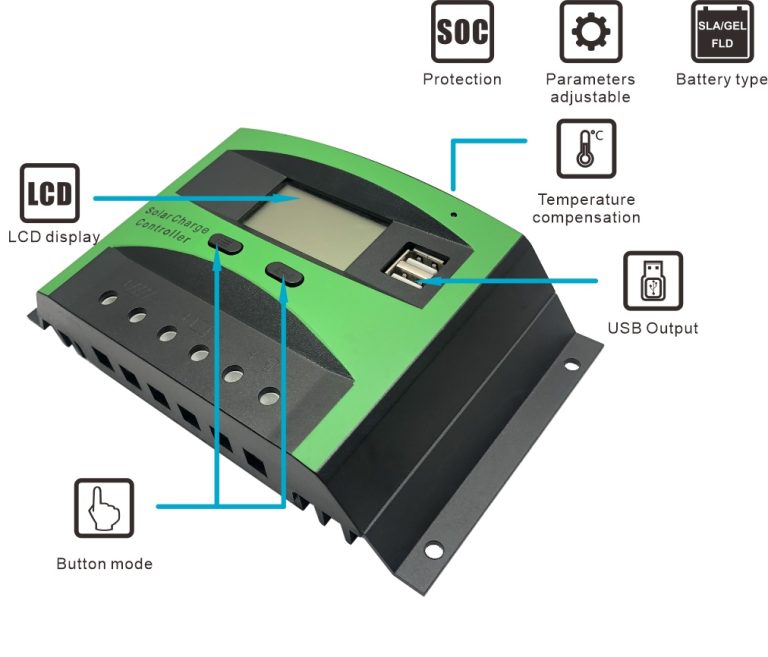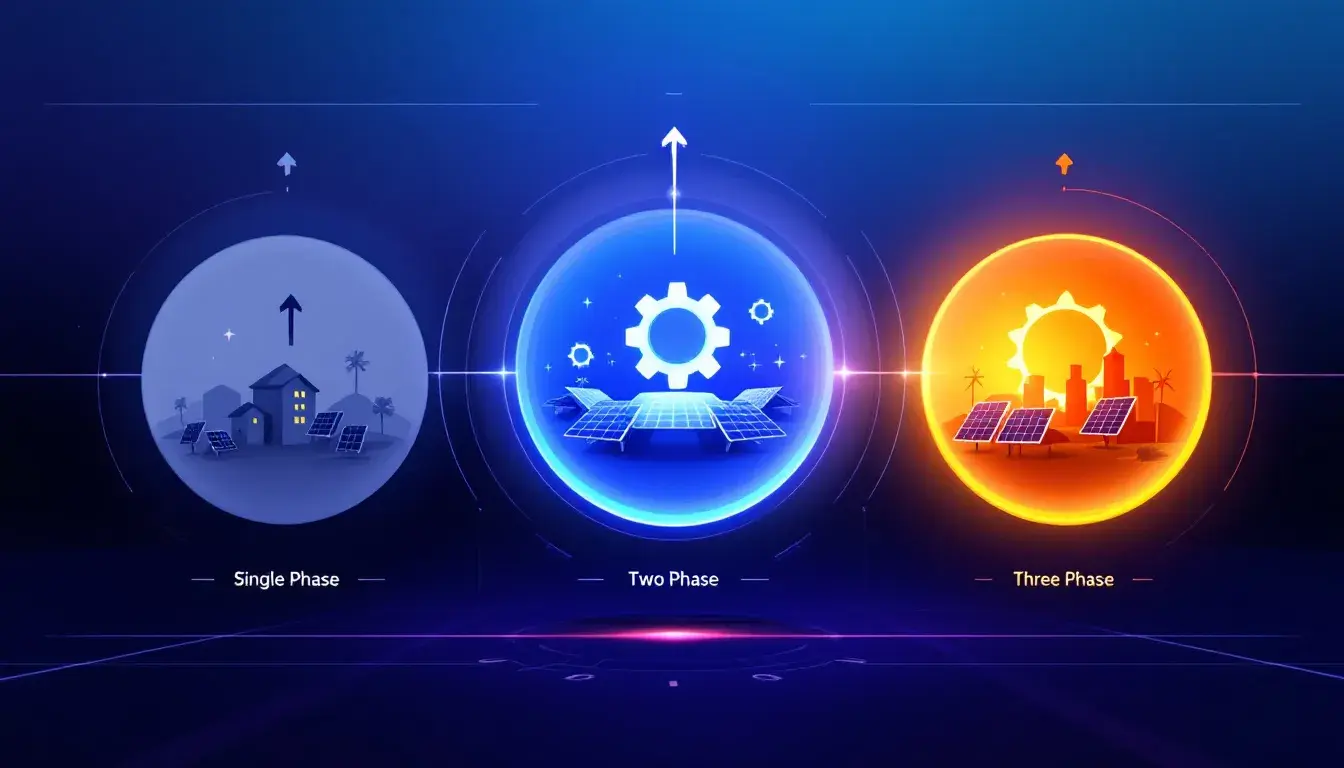Everything You Need to Know About MPPT Solar Charge Controllers
Table of Contents
ToggleWhen implementing photovoltaic systems, selecting an optimal solar charge controller is imperative for maximizing energy yields from solar panels. As operations look to extract every potential watt-hour from their renewable assets, MPPT charge controllers have emerged as the foremost solution for off-grid and battery-based PV applications.
- MPPT technology allows up to 30% more energy production over PWM controllers
- Match controller ratings to system voltage and current capacity for top performance
- Advanced monitoring and customizable features facilitate system oversight
- Proper sizing ensures a flexible platform supporting evolving energy needs
By continuously tracking the true maximum power point of solar modules, these controllers optimize electrical harvesting regardless of changing field conditions.
What is MPPT Solar Charge Controller?
At its core, MPPT stands for Maximum Power Point Tracking. By intelligently monitoring module performance metrics, MPPT controllers locate and maintain operation at the precise voltage where solar panels generate their highest wattage output. This optimal power point naturally drifts with irradiance levels and temperature fluctuations, so algorithms dynamically adapt voltage conversion to stay locked on.
How MPPT Works
Converters within the MPPT solar regulator function as the linking node between solar arrays and battery banks or loads. Independent of downstream system voltage, these step-up or step-down boosters transform incoming DC to suit the battery while continuously tracking fluctuations in the solar maximum. Regardless of environmental shifts, the controller adjusts the operating point to pump maximum current into storage.
Applications of MPPT Solar Charge Controllers
Off-grid solar installations especially stand to gain from MPPT performance advantages. Remote community microgrids, telecom tower farms, water pumping stations, and more depend on wringing out every last joule of stored daylight. With sun-spoiled energy the only resource, maximizing yields directly translates to optimizing uptime and economic viability of the whole operation.
MPPT technology delivers substantial benefits for non-grid solar applications through optimized energy harvesting:
- Standalone Home Systems – MPPT boosts power for essential appliances and lighting in off-grid homes.
- Water Pumping – Maximized solar power efficiently pumps and pressurizes water from boreholes or wells for agriculture, livestock and community use.
- Remote Telecom Towers – MPPT controllers keep batteries charged to power critical communications equipment in unelectrified regions.
Key Features of MPPT Charge Controllers
At their heart, all MPPT controllers leverage sophisticated hunting algorithms to pinpoint the voltage sweet spot delivering maximum watts from panels at any one instant. Cutting-edge models take functionality further with important bonus features:
Communications & Monitoring
Microprocessor-based charge controllers broadcast invaluable system metrics to external devices via common integration protocols. Managers appreciate visibility into daily/monthly kWh harvesting, battery state of charge, and operational setpoints/adjustments. Remote monitoring via tablets brings added convenience by removing the need for onsite diagnostics.
Advanced Control
Leading controllers go beyond basic four-stage charging to incorporate temperature compensation and load control staging. The former optimizes voltage setpoints according to actual panel temperature for increased yield. The latter allows selective prioritization of loads to balance energy frugality with essential services.
Selective Communication
Cutting-edge units support versatile communications suites including Ethernet, cellular modem, Modbus RTU/TCP, and even Bluetooth. System integrators appreciate the flexibility to remotely administer and troubleshoot projects using their preferred connectivity medium and protocols. Customizable alerts for under/over voltage and current faults add peace of mind.
Building Block Flexibility
Modular, scalable designs accommodate evolving system needs as the installation expands over time. Additional MPPT modules, remote climate sensors, and communications cards extend functionality while preserving earlier investment in the core charge controller platform. Distributed power architectures in particular benefit from the ability to start small and subsequently grow distributed energy and storage resources.
Multi-Unit Integration
Certain flagship controllers aggregate functionality across multiple MPPT channels into a centralized “virtual” device. This unified view streamlines overseeing large site-scale solar-plus-storage farms and microgrids as if controlling a single mega controller. Advanced GUI dashboards make actioning settings adjustments on dozens or even hundreds of units intuitive.
Choosing an MPPT Solar Charge Controller
With MPPT charge controllers serving as the vital bridge between solar panels and battery storage, selecting the appropriate model demands consideration of key system specs and usage parameters.
Current & Voltage Ratings
Foremost, ensure the controller can safely handle the maximum current output of installed PV modules under all irradiance conditions. Similarly, its voltage operating range must fully support the nominal and float voltages of chosen batteries. Undersizing risks equipment damage, while oversizing wastes money.
Environmental Specifications
Pay attention to the working temperature range. Controllers for robust outdoor use stand up to wide temperature swings as well as water/dust/corrosion resistance. Indoor or enclosure-mounted options require less durability.
Efficiency & Features
Aim for the highest MPPT efficiency to maximize energy capture. Consider advanced traits like load control, communications suites, and multiple charging algorithms as applications dictate. Customizable setups provide future-proof flexibility.
Warranty & Support
Ideally select full-service brands readily able to provide technical help now and spares/repairs/upgrades later as needs change. Long warranties protect initial investments.
Cost Factors
While lowest first cost draws some, factoring in true lifecycle expenses favors high-quality, high-efficiency controllers which optimize energy harvest values over time.
System integrators can best support their clients by carefully auditing these criteria and right-sizing controllers accordingly. Proper selection lays the essential groundwork for PV projects to reliably and productively serve remote needs for decades.
Conclusion
As the unsung backbone harnessing solar power’s potential, MPPT charge controllers prove themselves pivotal assets across facilities worldwide. Their talent for efficiently mobilizing every watt promises measurable returns through optimized energy harvesting and system uptime. With smart evaluation and integration of top-tier solutions, facility managers gain a future-proofed foundation facilitating renewable deployments to flourish for many sun-soaked years ahead.
Contact TOSUNLux today to get the best MPPT charge controller right now.
Tel: +86-577-88671000
E-mail: ceo@tosun.com
Skype: tosunelectric
Wechat: +86-139 6881 9286
WhatsApp: +86-139 0587 7291
Address: Room No.1001 Wenzhou Fortune Center,Station Road, Wenzhou, China
REQUEST A QUOTE
WhatsApp us
 : +86-139 0587 7291
: +86-139 0587 7291 English
English Español
Español Русский
Русский Français
Français العربية
العربية Português do Brasil
Português do Brasil Українська
Українська Türkçe
Türkçe Polski
Polski Nederlands
Nederlands Italiano
Italiano Bahasa Indonesia
Bahasa Indonesia हिन्दी
हिन्दी اردو
اردو አማርኛ
አማርኛ Հայերեն
Հայերեն ไทย
ไทย Монгол
Монгол فارسی
فارسی Shqip
Shqip Ελληνικά
Ελληνικά




